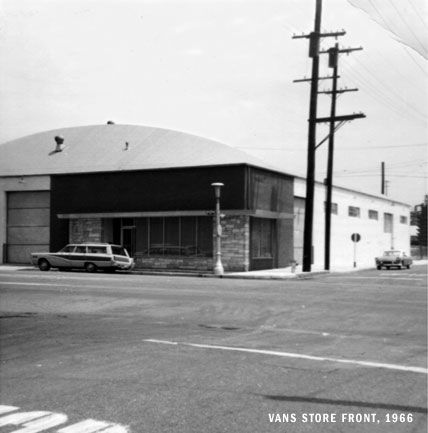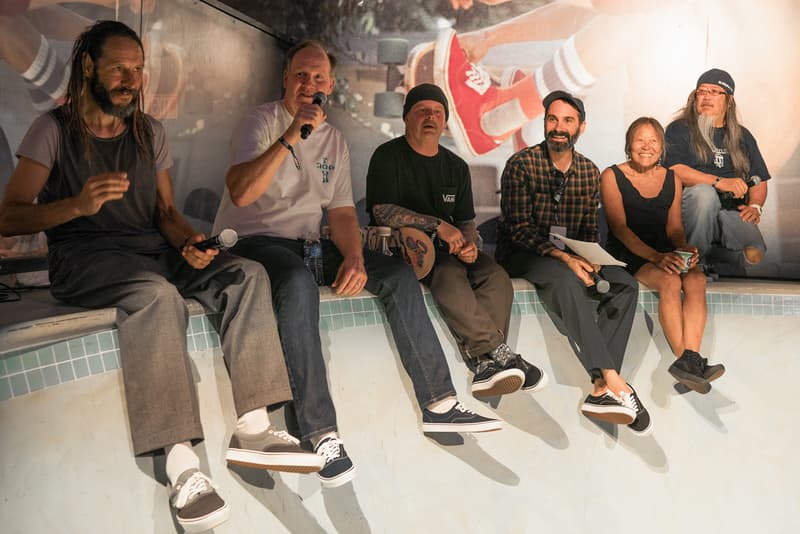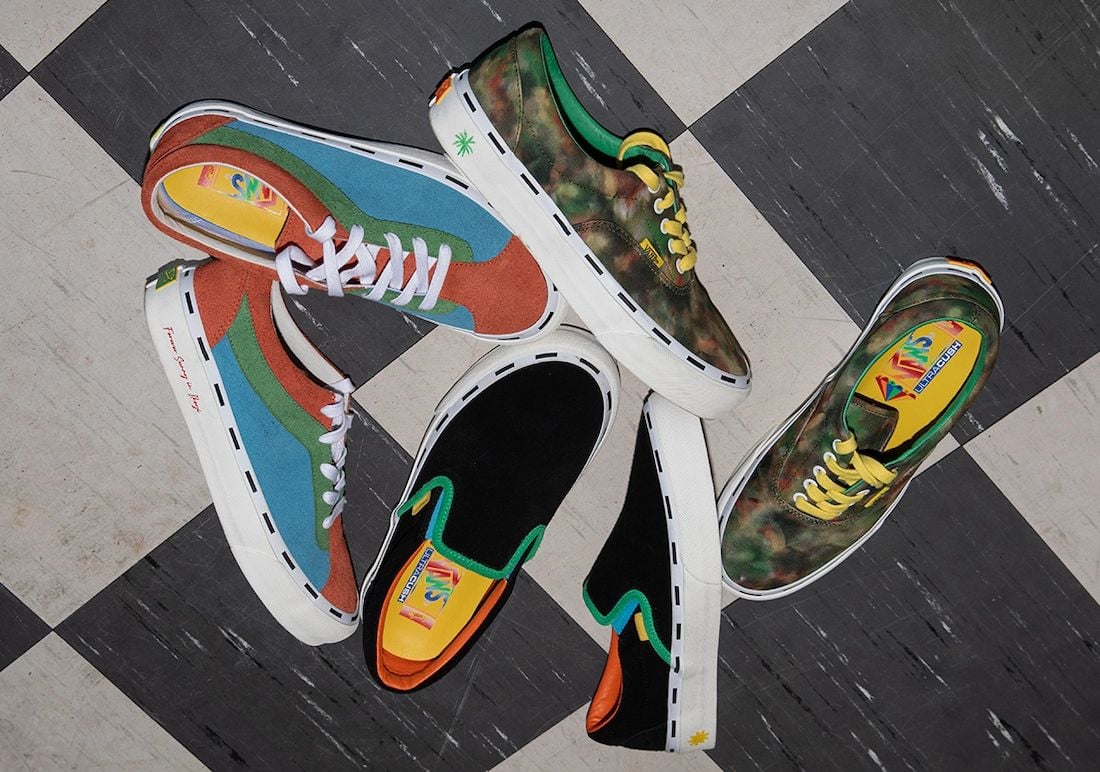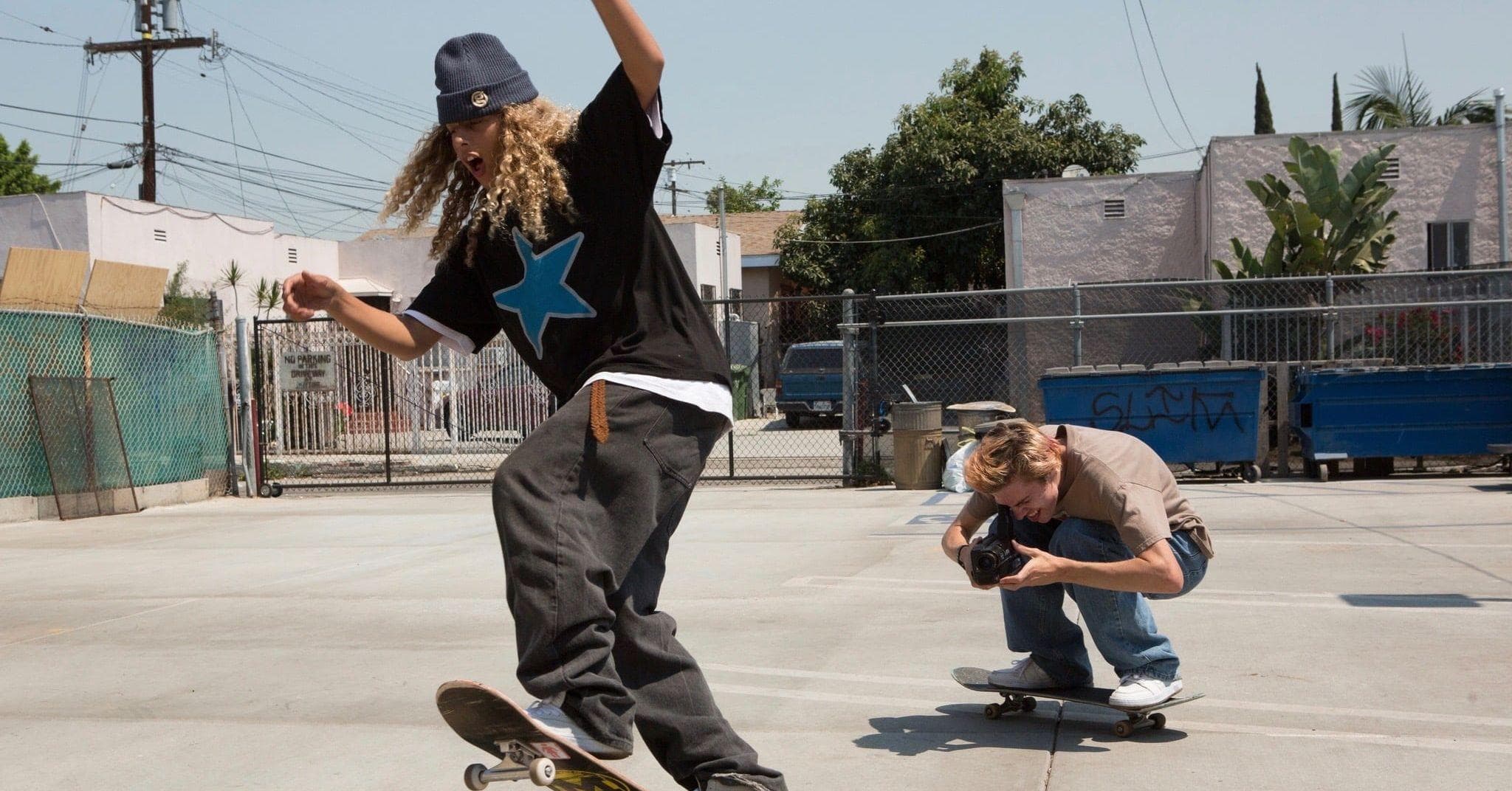For over five decades Vans has been stylin skaters, artists, punks, trendy high school kids and even soccer moms. The brand is a connector between people of all walks of life, a collection of timeless shoe designs that have been a mainstay in our culture. Doesn't matter where you came from, you've heard of Vans.
Vans was founded in 1966 by two brothers hailing from Anaheim, California. Paul and James Van Doren. Prior to opening their own company, both Paul and James worked for the Randolph Rubber Manufacturing Company for decades. In 1965 the Randolph Rubber Company became the first footwear manufacturer to produce a sneaker for the sole purpose of skateboarding, dubbed the Randy 720, the shoe was nearly identical to a Keds sneaker.
 |
| Anaheim, California |
Early advertisements for the shoe used corny marketing words of that era like, "Tough and toe heel. "Made with Randyprene rubber." In 1966 the brothers left Randolph to start Vans. Unlike their previous employer, the brothers aimed to focus less on whole sale business and cut out retailers entirely. Instead they would sell footwear directly to the consumer.
The same year Paul, James and their business partners built a manufacturing plant which included a 400 foot retail space, featuring a sign that read, "House of Vans." On the company's first day of business in 1966, 12 customers showed up to choose from three styles of sneakers including a new design named, the deck shoe, which you all recognize from these photos as the beloved, Vans Authentic Silhouette.
The Van Doren bros. only produced display models and if a purchase was made, the sneakers were then manufactured the same day and available for pick-up that evening. A risky strategy that could have easily lost the trust of their customers if they didn't deliver on time. Instead of losing trust, they quickly gained a reputation for delivering the best thick sole American made sneakers around.
 |
| The Van Doren Brothers |
To capitalize on the buzz, the Van Doren brothers made a decision to open up additional retail locations, starting with a stand alone store in Costa Mesa and quickly adding nine more stores. According to legend, over the next year the company opened a new store practically every week. The Vans bros. were anticipating massive growth, but the truth is that the company barely stayed afloat during the first decade of business.
Vans would see a huge turning point during the mid 70s when they made the decision to start producing skateboard sneakers. Numerous California surfers and skaters were already wearing Vans including Tony Alva and Stacy Peralta who approached the company in 1975 with the idea of producing a custom sneaker made specifically for skateboarding.
Utilizing Paul and James' experience with the Randolph Rubber Manufacturing Company over 10 years earlier, Vans came up with, what they called the 95. Known today as the Era, the model was released on March 18th, 1976 and featured a padded ankle collar, a diamond waffle sole and the company's now famous Off The Wall logo. While the sneakers were produced by Vans, Alva and Peralta were the driving force behind their success.
 |
| Tony Alva and Stacy Peralta |
The skaters were members of the Z-Boys, a group of 12 skaters who were sponsored by Jeff Ho Surfboards and Zephyr Productions. Not only that, but they also helped design the skate shoes and inspired the Off The Wall logo. As the story goes, Alva was skating an empty pool and caught air while still gripping his skateboard. Amazed, Skip the co-founder of the Z-Boys said, "Man, you just went off the wall!"
In 1980 Universal Studios reached out to Vans asking for sneakers to use in a movie that they were producing. The movie was, Fast Times At Ridgemount High. One of the young actors in the film was none other than Sean Penn. Penn had grown up surfing and skating in Santa Monica, California and told the producers that his character, the stoned surfer, Jeff Spicoli needed to wear Vans for the film.
The brand sent Universal a few pairs of sneakers, including a redesigned pair of slip-ons, featuring the checkerboard design inspired by the patterns young skaters had been drawing on the white Vans. The film performed well at the box office, grossing over $27 million and becoming a cult classic. Vans saw it's revenue double from 20 million to 48 million.
Everyone wanted a pair of slip-ons and Vans cemented it's reputation as the number one footwear company in North America. With their new found success the Van Doren brothers decided to focus their effort on expanding into different markets outside of skateboarding. The brand produced sneakers for everything from running, break dancing, to football, to even skydiving.
In 1984, only two years after the release of Fast Times At Ridgemount High, Vans filed for bankruptcy. The two brothers had lost their vision and forgot where their roots came from, skateboarding. Miraculously they emerged from their $12 million debt, three years later, paying back every cent that they owed. Between 1984 and 1987 Vans missed on a number of opportunities that allowed other brands, such as Vision Street Wear and even Nike to poach crucial skate customers, for example, in Stacy Peralta's ground-breaking 1987 skate movie, The Search For Animal Chin all of the members of the legendary Bones Brigade skated in Nike Air Jordan 1's.
If Vans would have had the marketing funds, they could have sent these skaters pairs of their shoes and had wide exposure in the skateboard world. In 1988 Vans attempted to correct their bad business decisions, by releasing their first signature skate shoe. The Steve Caballero. The high-top skate shoe that would later be transformed into a mid-top. This would be the Vans brother's last contribution to their company, because that same year, Vans was bought out by a venture firm.
Throughout the 90s and early 2000s McCown De Leeuw & Co. sought to reestablish Vans as one of the top brands in skateboarding and counter-culture. But Vans' reemergence was not without bumps in the road. In January of 1995 the company laid off 450 employees. Five months later it closes the manufacturing plant in Orange County and laid off an additional 1000 workers. Moving even more of it's production overseas. Despite all this, Vans sales increased and that same year the company sponsored the first Vans Warped Tour.
A summer festival that combines skateboard culture with punk rock and then in 1996 Vans collaborated with the underground New York City skate shop, Supreme on a series of Old Skools, the first of numerous collaborations between the two brands. In 2004 Vans launched Vans Custom via their website. Similar to Nike ID, Vans Customs allowed online shoppers to apply hundreds of colors and pattern combinations to their classic slip-ons and Old Skool models.
Then in 2006 Vans got a huge boost of popularity thanks to the song, "Vans" by the hip-hop group, The Pack. This allowed Vans to win over a much younger audience and of course, sales went through the roof. Throughout the years Vans has poured it's profits into keeping their classics popular among the public. To this day Vans continues to inspire and promote the cultures that make the brand what it is and continues to support the ambassadors, who along the years added to the illustrious history of the company.
 |
| Vans Forever |
Through various ventures they encourage creativity and individuality while continuing to put out a high quality, timeless footwear. Just like Converse or Nike, Vans has played a huge role in various subcultures. Today, Vans continues to grow with over 370 stores around the world, generating over $2 billion a year in revenue.




